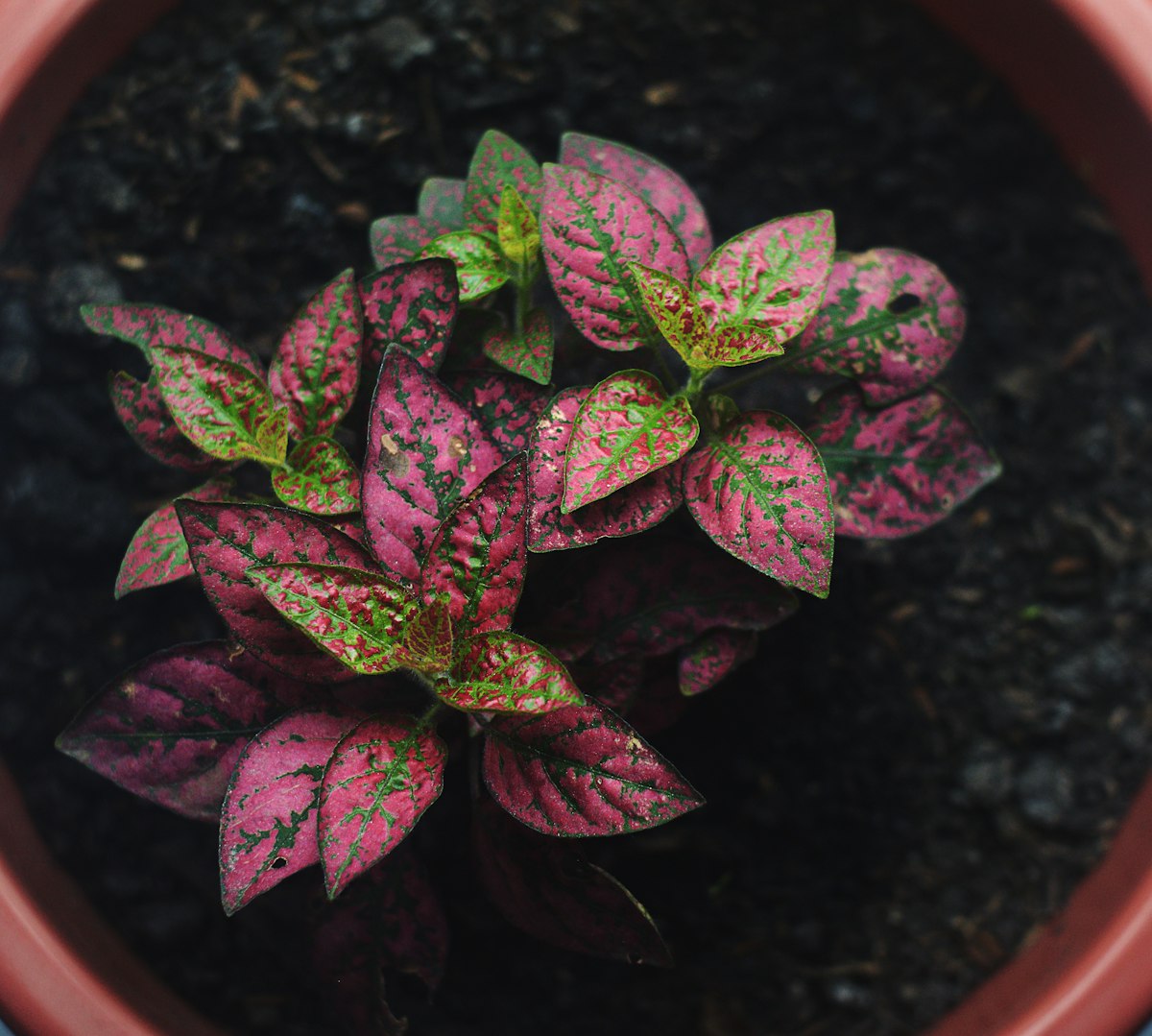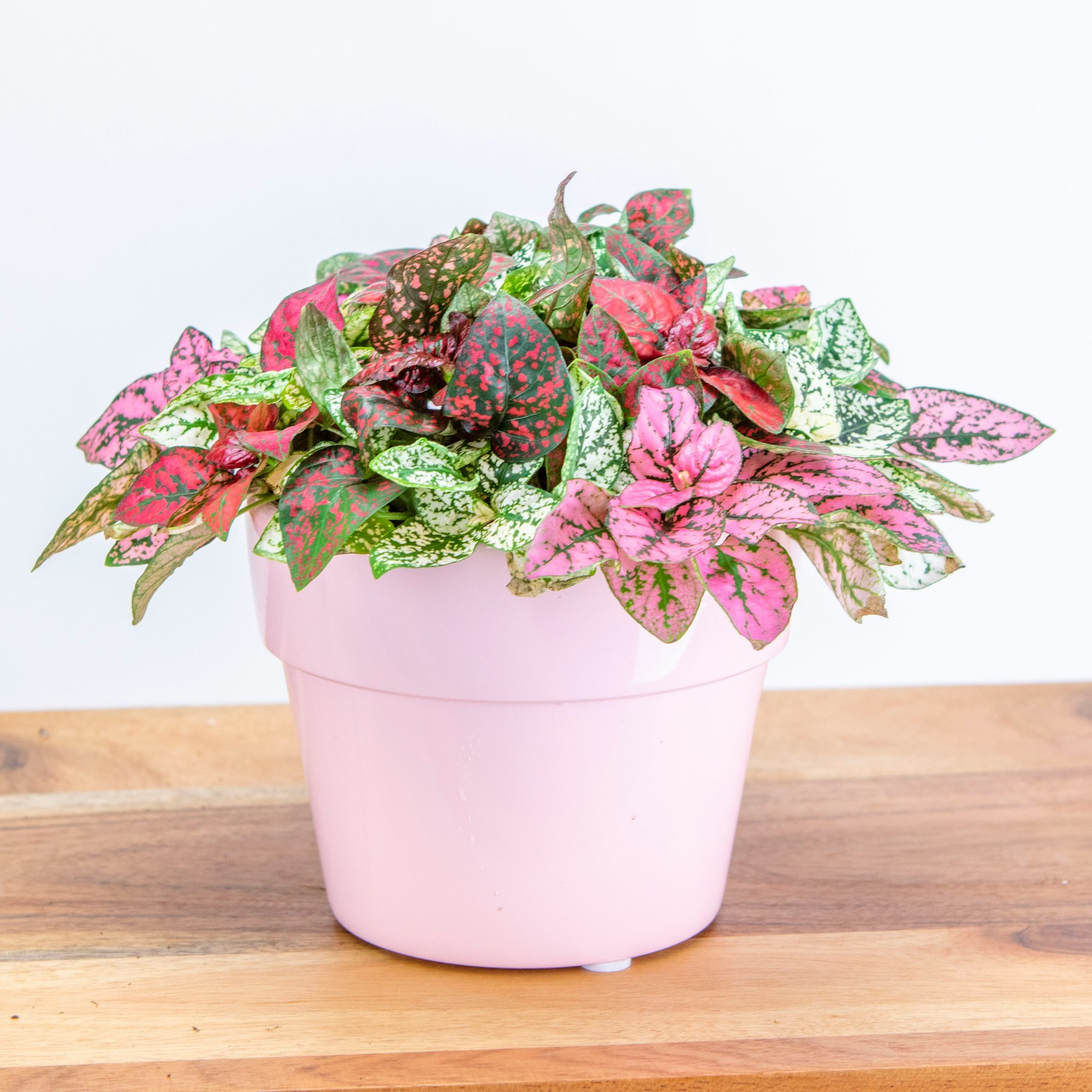How to Grow Polka Dot Plants
Polka dot plants are easy-to-grow, colorful indoor or outdoor space additions. Native to Madagascar, these plants boast a moderate growth rate and remain small, making them perfect for houseplant enthusiasts and gardeners.

Table of Contents
To ensure the healthy growth of your polka dot plant, it's essential to provide the proper conditions, such as a warm and humid environment.
Attention to temperature, sunlight, and plant spacing will help create the perfect environment for your vibrant new addition.
About Polka Dot
The Polka dot plant, known by its botanical name Hypoestes phyllostachya, is a vibrant and colorful herbaceous perennial.
Native to Madagascar, an island nation off the coast of Africa, the plant thrives in warm and humid climates.
In terms of appearance, the polka dot plant is known for its brightly variegated leaves, which come in various colors, including pink, red, and white.
Given its relatively easy care requirements and visually appealing appearance, these eye-catching colors can make it a popular addition to your garden or indoor plant collection.
Growing Polka Dot
When planting polka dot plants (Hypoestes phyllostachya), choose a well-draining, moderately moist soil enriched with organic amendments.
You can grow them in sand, loam, or clay soils with various pH levels, but avoid coastal soils since they have no salt tolerance.
Before planting, mix your chosen potting soil with perlite to enhance drainage.
Place seeds or transplants in containers or garden beds where they can receive semi-shade or dappled sunlight.
Remember, polka dot plants are herbaceous perennials, so space them 1 to 2 feet apart to ensure proper growth.

Caring for Polka Dot Plant
Sun and Temperature
Polka dot plants thrive in indirect light or partial shade; they may scorch in direct sunlight.
Maintain temperatures between 65-75°F (18-24°C) for optimal growth.
Water and Humidity
Keep the soil evenly moist but not soggy, as overwatering can cause root rot.
Provide adequate humidity by misting the leaves or placing the plant near a humidifier.
Soil
Use well-drained soil rich in organic matter with a pH between 5.5 and 6.5.
The plant can also tolerate sand, loam, or clay soils but avoid coastal soils due to their salt content.
Fertilizer
Fertilize your polka dot plant with a balanced houseplant fertilizer per the package instructions.
Water-soluble fertilizers are suitable for both indoor and outdoor plants.
Repotting
Repot your polka dot plant when it outgrows its current container or if its roots become cramped.
Use a pot with drainage holes and fresh soil with plenty of organic matter.
Pruning and Propagation
Prune your plant regularly by pinching the tips to promote bushiness and prevent legginess.
Propagate polka dot plants by placing cuttings in water or moist soil until new roots develop.
Troubleshooting Plant Problems
Growing Problems
If your polka dot plant displays leggy growth, it may need more light. Move it to a spot with bright, indirect light, but avoid intense sun all day.
Yellowing leaves could result from inconsistent irrigation or overwatering.
Water only when the top inch of the soil is dry, and consider repotting your plant with fresh soil if overwatering is suspected.
Pests and Diseases
Polka dot plants can attract common pests like aphids, mealybugs, spider mites, and scale.
Treat these infestations using insecticidal soap or neem oil.
Diseases like powdery mildew may also affect your plant. Improve air circulation and avoid overwatering to prevent fungal issues.
Companion Planting
Choosing companions that prefer similar growing conditions is essential when growing polka dot plants with other houseplants.
Plants with similar light and water needs will make your overall care routine more manageable.
Consider pairing your polka dot plant with other colorful foliage plants like coleus or caladiums for a visually pleasing display.
Conclusion
Growing polka dot plants is easy, making them an ideal choice for beginners and experienced gardeners.
Following essential polka dot plant care guidelines, you can ensure a healthy and thriving plant plant plant.
Remember to provide organic potting soil enriched with peat moss and maintain a warm temperature of around 70 to 75 degrees Fahrenheit for successful germination.
Place your plant in a semi-shaded area to avoid leggy growth or leaf burn, and enjoy the vibrant foliage of the polka dot plant in your indoor or outdoor space.
Frequently Asked Questions
What type of light do polka-dot plants need?
Polka dot plants thrive in bright, indirect light. Avoid placing them in prolonged direct sunlight, which can cause leaf burn.
What kind of soil is best for polka dot plants?
For healthy growth, use well-draining soil and amend it with compost or other organic matter if needed. This helps to prevent root rot and promotes strong roots.
Are polka dot plants annual or perennial?
Polka dot plants (Hypoestes phyllostachya) are warm-climate perennial plants. They are herbaceous and feature brightly variegated leaves.
How can I propagate polka dot plants?
You can propagate polka dot plants by taking stem cuttings. Place the cuttings in water or moist potting soil; they should develop roots within a few weeks.
Can polka dot plants be grown outdoors?
Yes, polka dot plants can be grown outdoors. However, they make a minimal impact in outdoor gardens and are better suited for small-scale planters or containers.
How do I care for a polka-dot plant indoors?
To care for a polka dot plant indoors, water it thoroughly when the top inch of the soil is dry.
Prune back growing tips as the stems get lengthy to encourage fuller growth and maintain a compact appearance.


